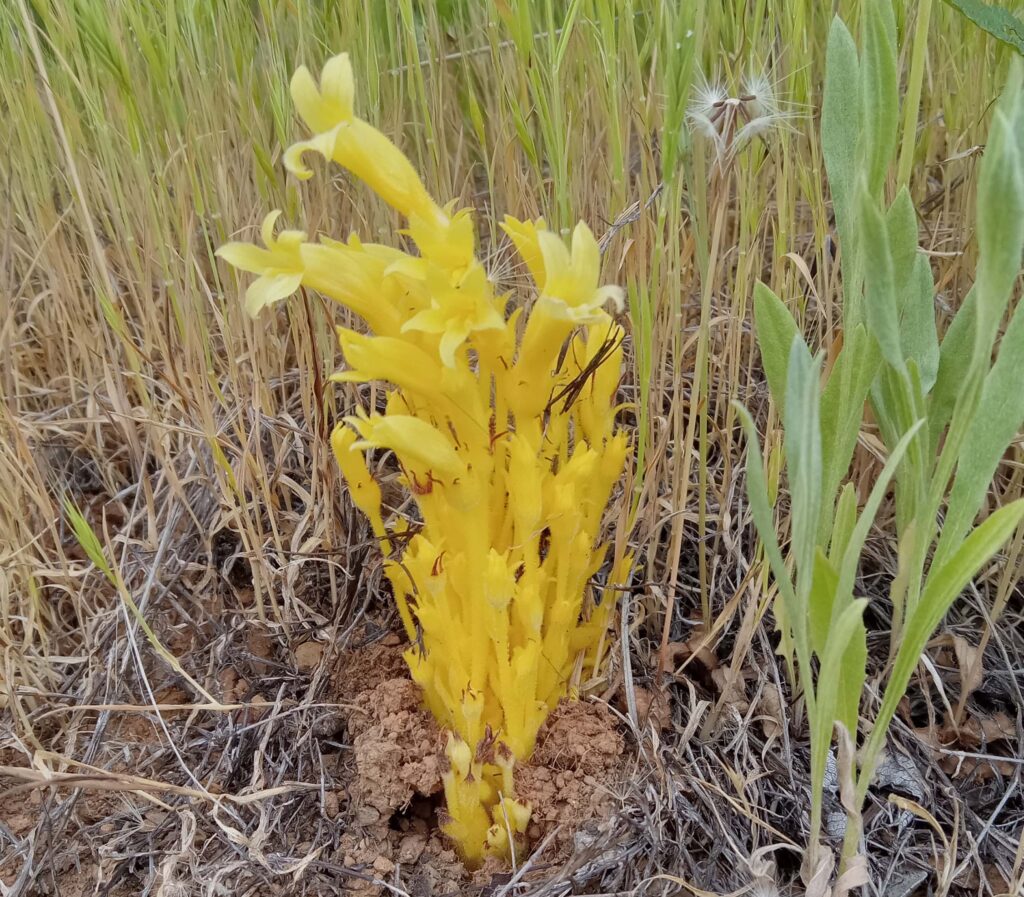
Shasta Chapter CNPS and Shasta Environmental Alliance led a joint field trip in the cool, early morning of May 4. We found a lot of plants in bloom on this easy, three-mile walk. The Sacramento River Trail is a beautiful trail with great views of the river and surrounding countryside. It is always a pleasure to walk, especially when there are few people.
Despite a late spring, many plants were in bloom. One common shrub found blooming all along the trail was yerba santa. This species is a fire follower that germinates after fire. Dormant seeds of this plant need the heat and chemical change that fire provides to break down their protective seed coat.

One uncommon flower that we found in a large bunch was clustered broomrape, a wholly parasitic plant that gets its nutrients from the roots of nearby plants. Because it has no chlorophyll, the plant is entirely whitish to yellow, with no green parts.

Paper onions, California poppies, valley sky lupines, fiddleneck, and snowdrop bush were some of the other native plants that we observed, as well as recovering blue, valley, and interior live oaks; Oregon ash; and arroyo, black, and sandbar willows.
We also observed many non-native weeds. Unfortunately, Spanish broom is coming back aggressively, despite years of removal by various work crews organized by Randy Smith. Left unchecked, it will soon dominate a large section of the floodplain.
On Thursday, May 25, 2023, Shasta Chapter CNPS and Shasta Environmental Alliance will co-lead another Sacramento River Trail field trip, but this time on its south side, which has a greater diversity of riparian plants. For details, see Future Field Trips: May 2023. ~David Ledger
